
Marvel’s Superhero Licensing
By Nicole J. S. Sudhindra, Attorney and Former WIPO Consultant
Comic books, once associated with geeky adolescent boys and low-budget entertainment, now are linked to celebrities and big money. What’s changed since the dawn of the concept in the 1930s? Movies!
While television shows based on comic books have been successful over the years, it is the film industry that has made characters like Superman and Spider-Man world renowned.
Marvel, one of the original comic book producers, has since 1939 created almost 8,000 characters, including Iron Man, Spider-Man, the Hulk, Blade, Thor, the X-Men and the Fantastic Four. Acquired by the Walt Disney Company in 2009, Marvel often outperforms its rival, DC Comics (owned by Time Warner) – which produces Batman, Superman and Wonder Woman – in the volume and dollar value of its monthly comic sales.
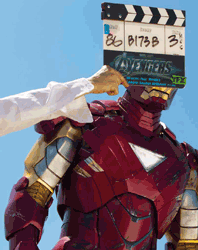
As a company based almost entirely on creative assets, it is no surprise that intellectual property (IP) plays a key role in Marvel’s fortunes.
IP Rights & Marvel’s Characters
IP protects comics in two main ways: through copyright and trademark law. Copyright protects an original storyline, characters and graphical elements, and gives creators the power to control the way in which their works, and the characters they create, are used.
Copyright Protection
Most comics are underpinned by the notion of a battle between good and evil. While this broad idea itself does not qualify for copyright protection, an author’s unique interpretation – the storyline and the characters developed to play out this battle – does. Comic book writers and artists, who are essential in creating storylines and characters, are often employed by comic book publishers. In many jurisdictions, including in the US, when artistic creations are produced in this way, they are considered works made for hire, and the copyright in these works automatically vests in the employer.

In 2009, the estate of comic book artist Jack Kirby (1917-1994) brought a case to assert rights in a number of works appearing in Marvel editions between 1958 and 1963 that he had co-created. However, the United States District Court Southern District of New York determined that Marvel held the copyright in the works created by Mr. Kirby. It held that Mr. Kirby’s work “qualifies as work-for-hire under the [US] Copyright Act of 1909,” which governs works made before January 1, 1978. Mr. Kirby had been paid a flat per-page rate for the artwork and scripts he, and other freelance artists and writers, produced in line with the plot outlines or scripts provided by Stan Lee, Marvel’s long-standing editor-in-chief. The court concluded that Mr. “Kirby did not create the artwork … until [Stan Lee] told him to” and so did not own the copyright in those works. Mr. Kirby’s estate filed an appeal with the US Court of Appeals, Second Circuit in August 2011.
While Mr. Kirby could not have anticipated the widespread and enduring popularity of the superheroes he co-created, nor the subsequent evolution of copyright law, this case offers a salutary lesson on how important it is for creators to understand the ins and outs of copyright law, as well as the need to future-proof the strategic management of their works.
Trademark Protection
Comics may also be protected under trademark law. Trademarks are used to protect the names and likenesses of Marvel’s comic book superheroes. This protection has been key to enabling Marvel to build and secure sizeable revenue from character merchandizing, an activity that has been further boosted by the company’s movie licensing strategy.
In the early 1980s, comic book fans associated the term “superhero” and its variations so closely with characters featured in Marvel’s storylines and those of its rival DC Comics, that the two companies were able to co-register the name “SUPER HEROES” as a mark for use on toys (US Reg. No. 1140452 - Oct. 14, 1980) and comic books (US Reg. No. 1179067 – Nov. 24, 1981). These registrations are still active, although many comic book fans and legal professionals question the appropriateness of granting such rights over what is arguably a descriptive generic term.
Licensing Magic
As holders of the IP rights in its creative works, Marvel has been able to leverage the commercial value of its superheroes through a series of profitable licensing agreements. These agreements define and structure the business relationship between the licensee and the licensor, outlining the terms and conditions by which a manufacturer may produce, for example, a toy in the likeness of a given character.
From the late 1970s to the early 1990s, Marvel’s licensing strategy enabled it to distribute its characters beyond comic books to multiple media formats, including films, television, and video games. Today, Marvel’s merchandizing reach has no limits, and can include anything from toys to perfume and clothing to luxury cars. During this period, Marvel sold options to major studios to produce films based on its characters. Despite the success of its character-licensing business, Marvel was keen to acquire full control over its creative assets and a greater stake in the box office returns generated by these movies. The creation of Marvel Studios in August 1996 was an important step in achieving this goal.
A Move Towards Film Production
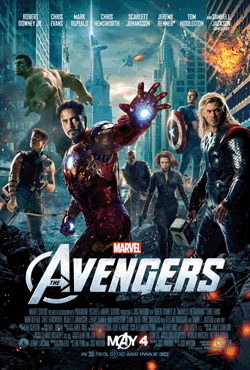
In September 2005, Marvel Studios came into its own when it announced a US$ 525 million credit facility that would allow it to finance its own production of up to 10 films based on Marvel characters.
The Marvel Universe is made up of a fantastic array of iconic characters. While most Marvel superheroes have their own comic book and storyline, their lives often intertwine in the Marvel Universe in which they all co-exist. At times a major event occurs in the Marvel Universe causing the superheroes to take collective action to save the Earth, the Universe or themselves. In the comic books, the team known as “The Avengers” – which regularly includes Captain America, Iron Man, the Hulk, Thor, Black Widow and Hawkeye - frequently team up with Spider-Man, the Fantastic Four and the X-Men to fight a common foe (and sometimes even each other) in major crossover events. Adapting these crossover comic book storylines into an action movie would be a challenge for Marvel, not least because of its earlier emphasis on licensing its characters to major film studios. For example, Marvel licensed Spider-Man to Sony Picture Entertainment in 1999; the Hulk character to Universal Pictures which released Ang Lee’s Hulk in 2003 and film rights to characters featuring in 20th Century Fox’s movies X-Men (released in 2000) and Fantastic Four (released in 2005). 20th Century Fox still has a license on the characters featured in these films.
Marvel Studios has only recently been able to regain the film rights to enough of its top-tier characters to make up the team of iconic superheroes featuring in its box office hit, Marvel’s The Avengers. The film recounts the story of how Nick Fury of S.H.I.E.L.D. brings together a team of superheroes – Captain America, Iron Man, the Hulk, Thor, Black Widow and Hawkeye – to form The Avengers to help save the Earth from Loki and his army.
In 2005 Marvel was able to claw back movie rights to Iron Man from New Line Cinema, whose film option had expired after several years of unsuccessful development. This paved the way for the successful release of the movies Iron Man and Iron Man 2, in 2008 and 2010. Similarly, Marvel regained film rights to the Hulk from Universal Studios, thanks to a clause whereby rights revert to Marvel if principal photography (the part of filming with actors on camera) or significant payments towards filming are not initiated by a specified date after the first film’s release.
The question is: will Marvel be so fortunate in regaining film rights to Spider-Man, one of its most popular superheroes? These rights have been caught in a complex web of licensing since 1985. After several rounds of litigation involving, principally, Marvel and Metro-Goldwyn-Mayer, Inc., which claimed to have acquired the film rights from a series of well-known but now defunct studios, the courts determined that Marvel owned the film rights to Spider-Man. It subsequently licensed these rights to Columbia Pictures Industries, Inc. (owned by Sony Pictures Entertainment) in 1999, which went on to make Spider-Man (2002), Spider-Man 2 (2004), Spider-Man 3 (2007) and the upcoming The Amazing Spider-Man to be released in summer 2012.
About Marvel’s Licensed Superheroes
- Iron Man, also known as Tony Stark, is a brilliant, rich inventor who creates a high-tech armored suit to become a superhero. He is a founding member of The Avengers.
- The Hulk is the transformation of scientist Bruce Banner, who was exposed to a blast of gamma radiation. During moments of stress, Bruce Banner turns into the brutish green force that is the Hulk, who is a key member of The Avengers.
- Spider-Man, a more recent addition to The Avengers as portrayed in the comic books, is Peter Parker, a high school boy who was bitten by a radioactive spider and endowed with spider-like powers. Driven by the death of his uncle, Spider-Man fights evil and lives by the trademarked phrase, “With great power comes great responsibility”. Introduced to the Marvel Universe in 1962, Spider-Man remains one of the most famous superheroes.
- Wolverine is a mutant with retractable claws and unlimited healing powers and member of The New Avengers team. 20th Century Fox licensed Wolverine from Marvel in 1994 as part of the X-Men and went on to produce the X-Men trilogy: X-Men (2000), X2 (2003) and X-Men: The Last Stand (2006) as well as two prequels, X-Men Origins: Wolverine (2009) and X-Men: First Class (2011). While comic book fans would welcome seeing Wolverine among the ranks of The Avengers, this is unlikely to happen on the big screen.
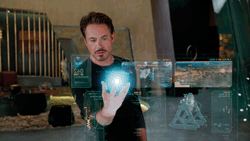 |
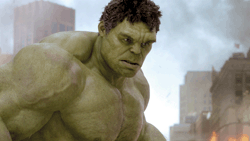 |
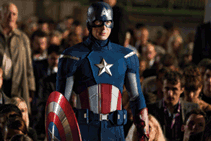 |
Lessons Learned
Marvel’s robust IP assets have without a doubt enabled it to reap enormous benefits from its licensing activities. Its low-risk movie-licensing strategy has meant that film studios carry all the financial risk in developing the film, while creating multiple marketing opportunities for Marvel. Even where a film, such as Ang Lee’s Hulk, disappointed at the box office, Marvel enjoyed significant revenue from film-related merchandise sales and an upsurge of interest in its comic books. Sales of the role play toys known as “Hulk Hands” (a pair of large costume gloves), for example, have been valued at US$100 million. Moreover, Marvel’s astute business strategy has enabled it to further leverage the commercial value of its characters by striking licensing deals across multiple media platforms.
The down side, however, is that now that Marvel Studios is a fully-fledged filmmaker, it is still bound by pre-existing movie licensing agreements and therefore cannot readily use all of its top-tier superheroes to reenact some of Marvel Universe’s hallmark epic comic book battles. However, its rich stable of characters along with a degree of serendipity have made it possible to pull together a superhero cast in Marvel’s The Avengers that is sufficiently mesmerizing to keep fans happy.
When asked whether Marvel Studios was considering ways to bring film-licensed characters back home in an interview with HeyUGuys, Kevin Feige, Marvel Studios’ President said, “the contracts are all very specific, and if there is ever a time for them to revert, they will. But right now they are safely at those studios… The truth is… there are almost 8,000 characters in the Marvel library… and not all of them would make a movie, but a lot of them will.”